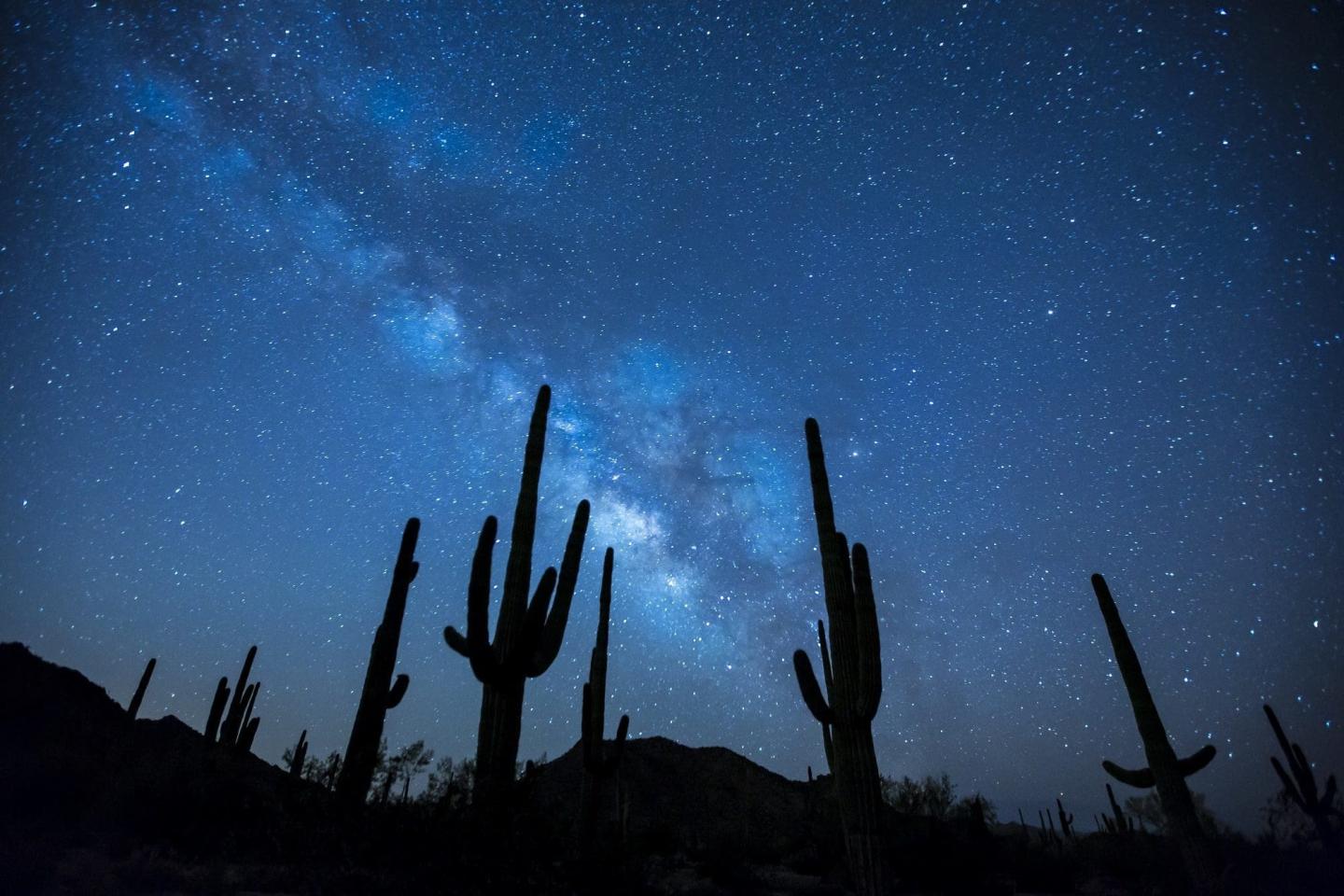
See the Astonishing Dark Skies Protected in Saguaro National Park

For thousands of years, people have been gazing at the stars through the cactus-studded, mountain-crested landscape of what is now known today asSaguaro National Park. Visitors to Saguaro after dark are often astonished by how many stars can be seen just outside of Tucson.

Urban Night Sky Place
Arizona’s second-largest city, Tucson is home to more than a million people living in the metropolitan area. In late 2023, in recognition of the park’s dark skies and efforts to preserve them, DarkSky International certified Saguaro as an Urban Night Sky Place—only the ninth in the world and the second in the national park system.
Check out Visit Tucson or Visit Arizona for help planning a trip!

Dark Skies Preserve Ecosystems
Saguaro’s skies may not be as dark as more remote national parks like Death Valley or Great Basin, but its proximity to the city of Tucson makes these efforts all the more important. As Tucson has grown in recent decades and steadily expanded closer to the park’s boundaries, impacts to the dark night sky have become more of an issue. Dark night skies are one of many natural resources threatened by increasing urbanization near Saguaro National Park. Light pollution, defined as human-made alteration of outdoor light levels, not only blocks our view of the universe, but significantly disrupts wildlife, impacts human health, wastes money and energy, and contributes to climate change.

Light Pollution Protection
While urban lights are an issue, Saguaro National Park benefits from its location within a region that preserves and celebrates dark night skies. DarkSky International was founded in Tucson in 1988 and has now certified more than 200 Dark Sky Places in 22 countries on six continents. Their Urban Night Sky Place program recognizes sites near or surrounded by large urban areas, and whose planning and design actively promote an authentic nighttime experience amid significant artificial light at night. The City of Tucson became the first city in the world to have an ordinance to address light pollution for space observation. Pima County zoning codes are touted as some of the better examples of quality lighting standards and dark sky protection.

Want to show your love and support for Saguaro National Park?
Shop WNPA’s collection of apparel, books, collectibles, and more.

Astronomical Research Collaboration
The park is surrounded by world-class astronomical research programs and a community of night sky specialists operating from Kitt Peak National Observatory, Mount Graham International Observatory, Fred Lawrence Whipple Observatory, Steward Observatory, and Mount Lemmon Observatory. Saguaro National Park has an important role in collaborating with these technical experts along with amateur enthusiasts to support the stewardship and promotion of night sky resources.

Wildlife Conservation
Park staff, working with these various partners, have spent years working to reduce human-made light to create a dark space that allows visitors and animals alike to take refuge. The park’s lighting management plan and lighting retrofits made over the years follow DarkSky’s Five Lighting Principles for Responsible Outdoor Lighting.

Saguaro National Park
A Lush Desert Landscape and Urban Night Sky Place with Deep Cultural Connections
Today, visitors, residents, and wildlife alike benefit from this hard work to protect natural night skies over the park’s Sonoran Desert and Sky Island ecosystems. Star parties, ranger-guided night hikes, storytelling events, and self-directed exploration provide visitors varied opportunities for enjoying and learning more about the night sky and its cultural and natural significance to all of us.
By Spencer Burke, Saguaro National Park






